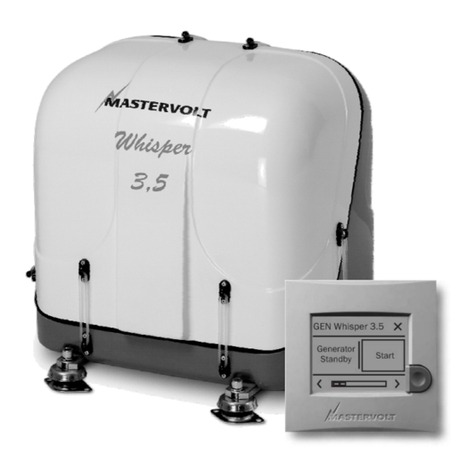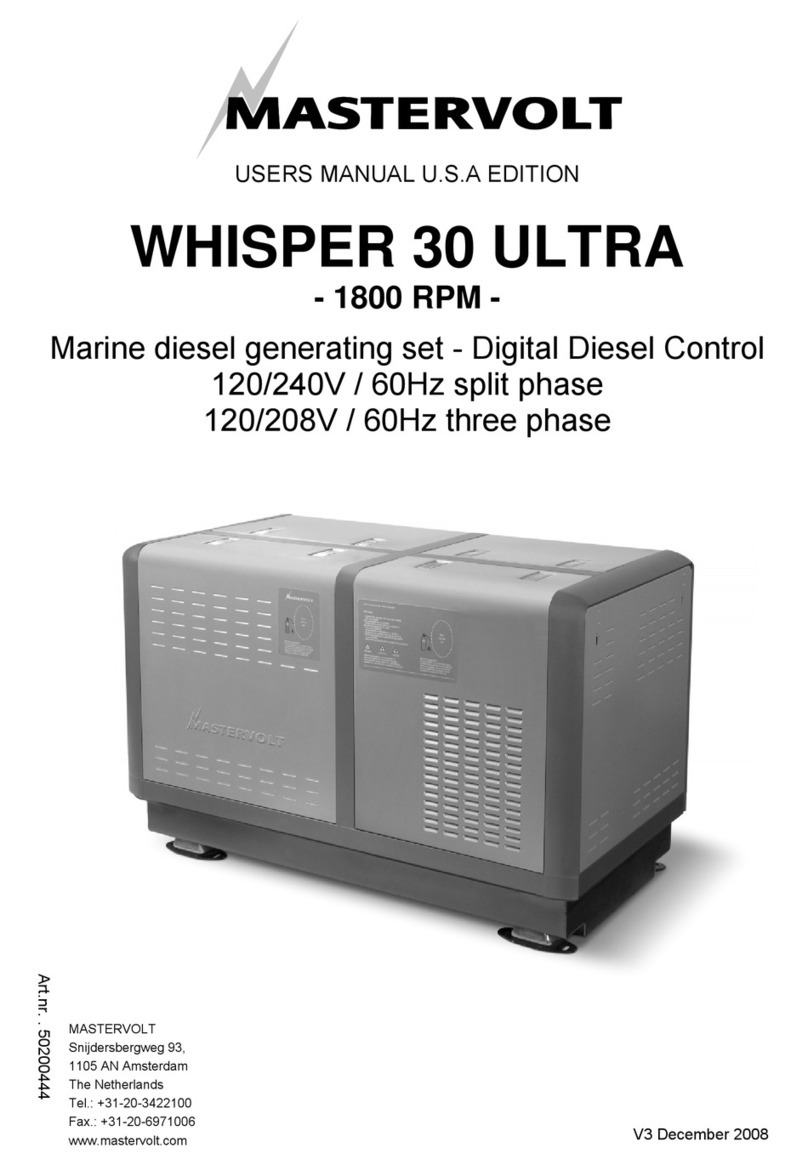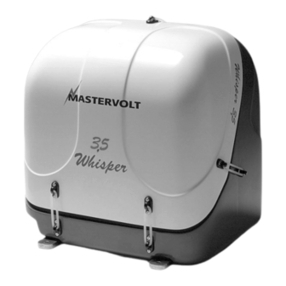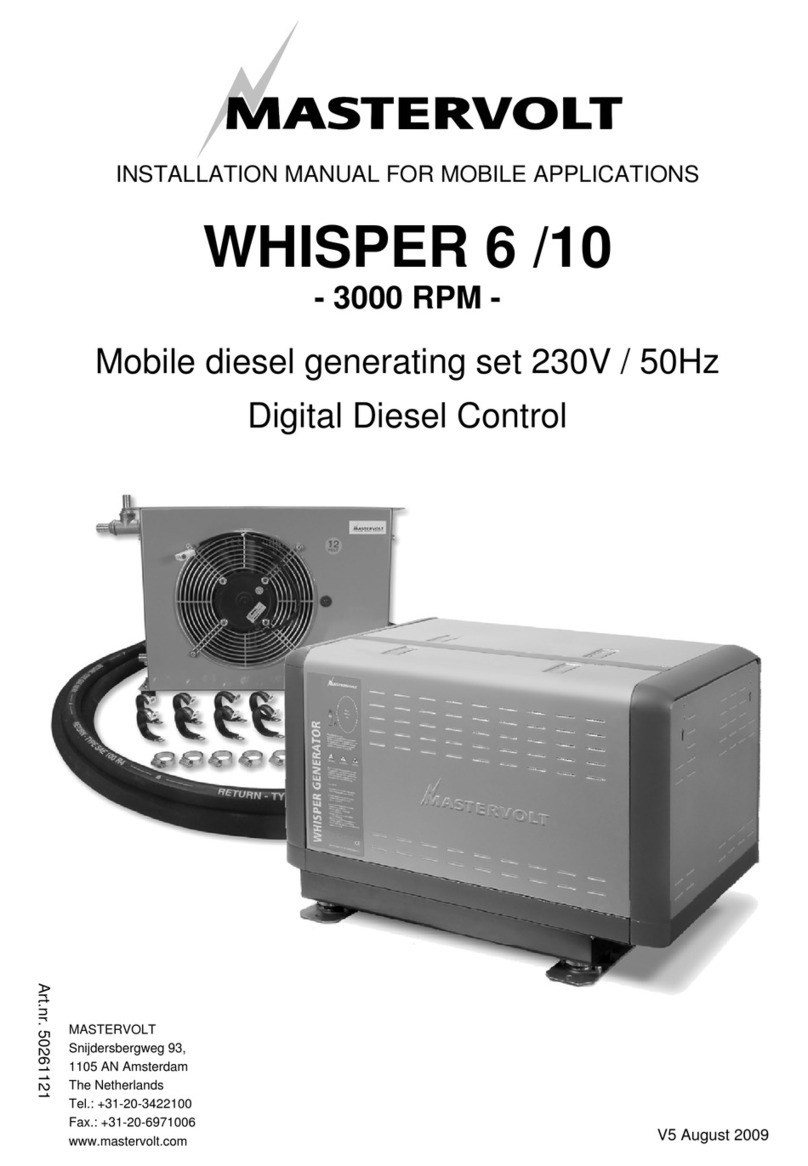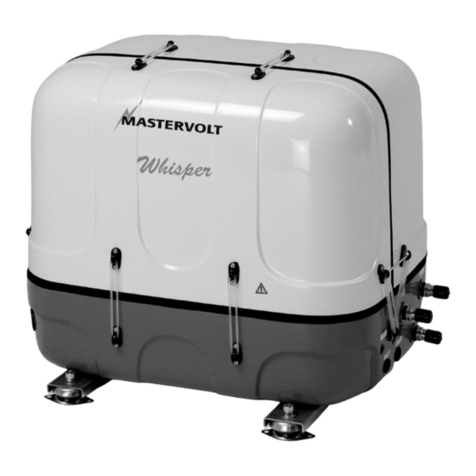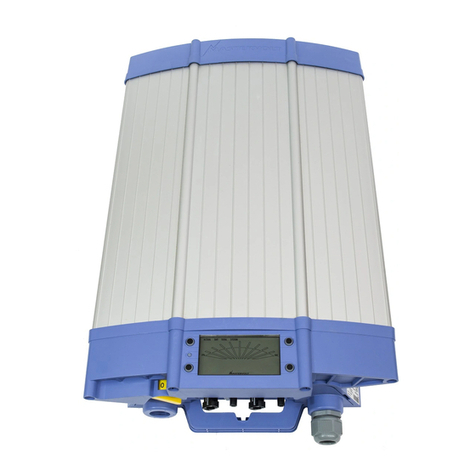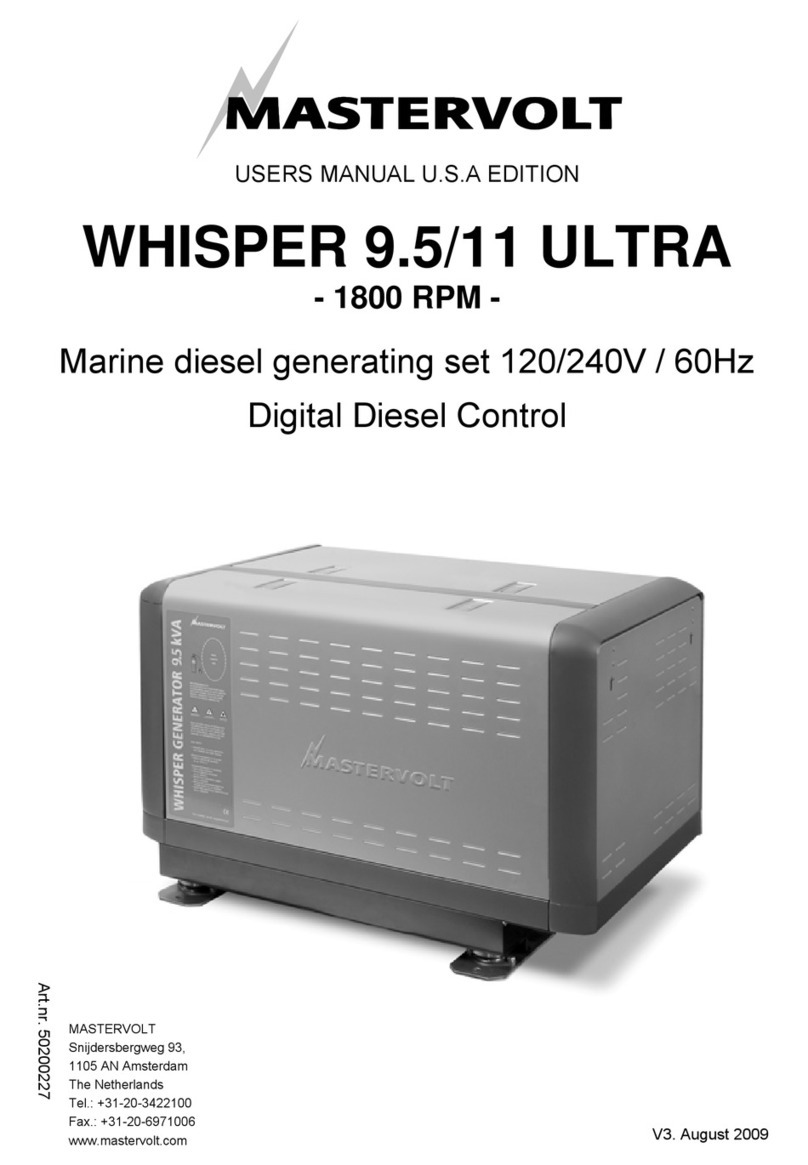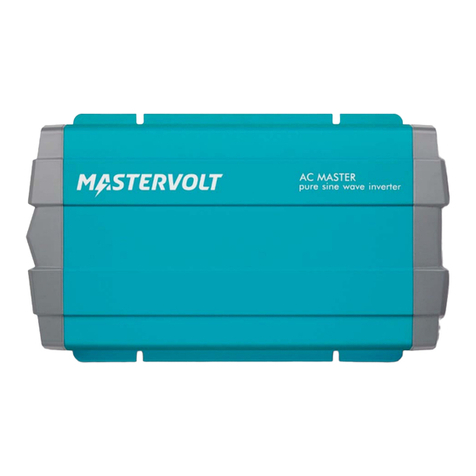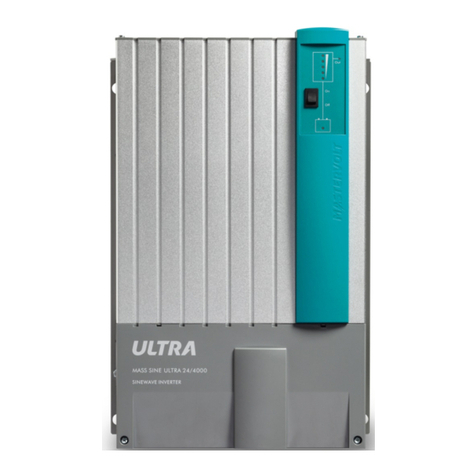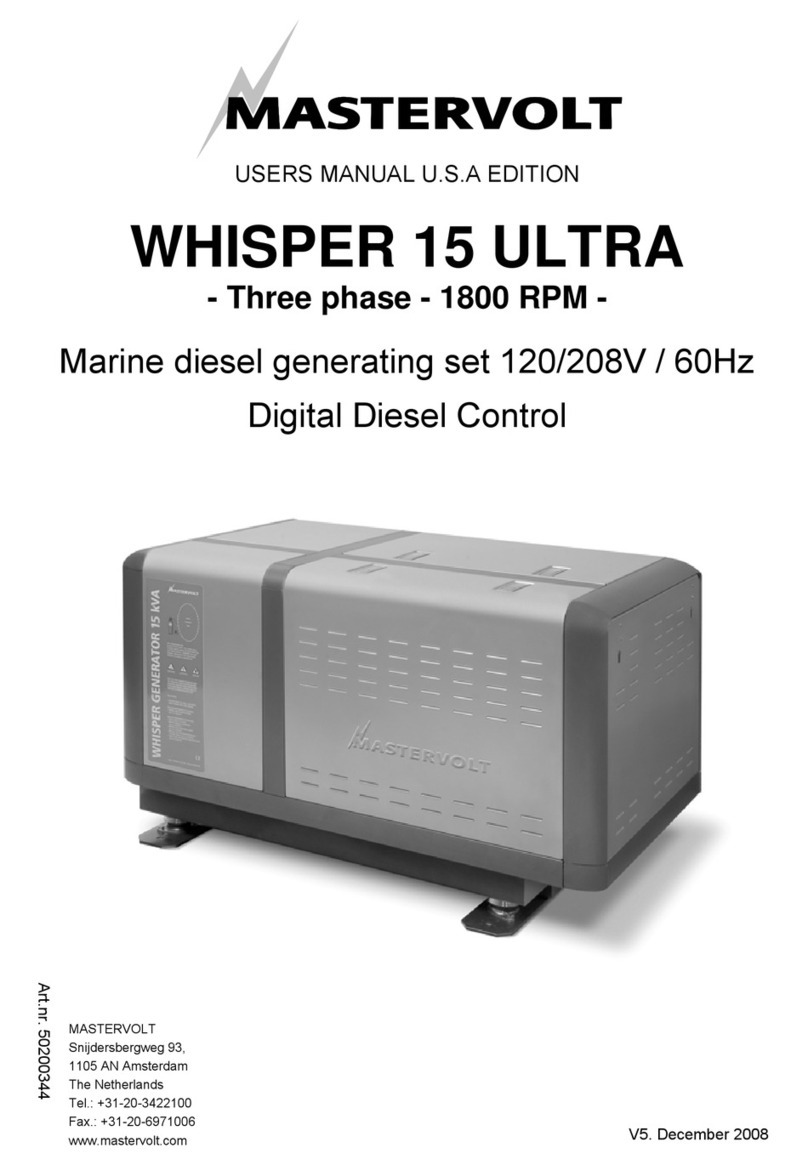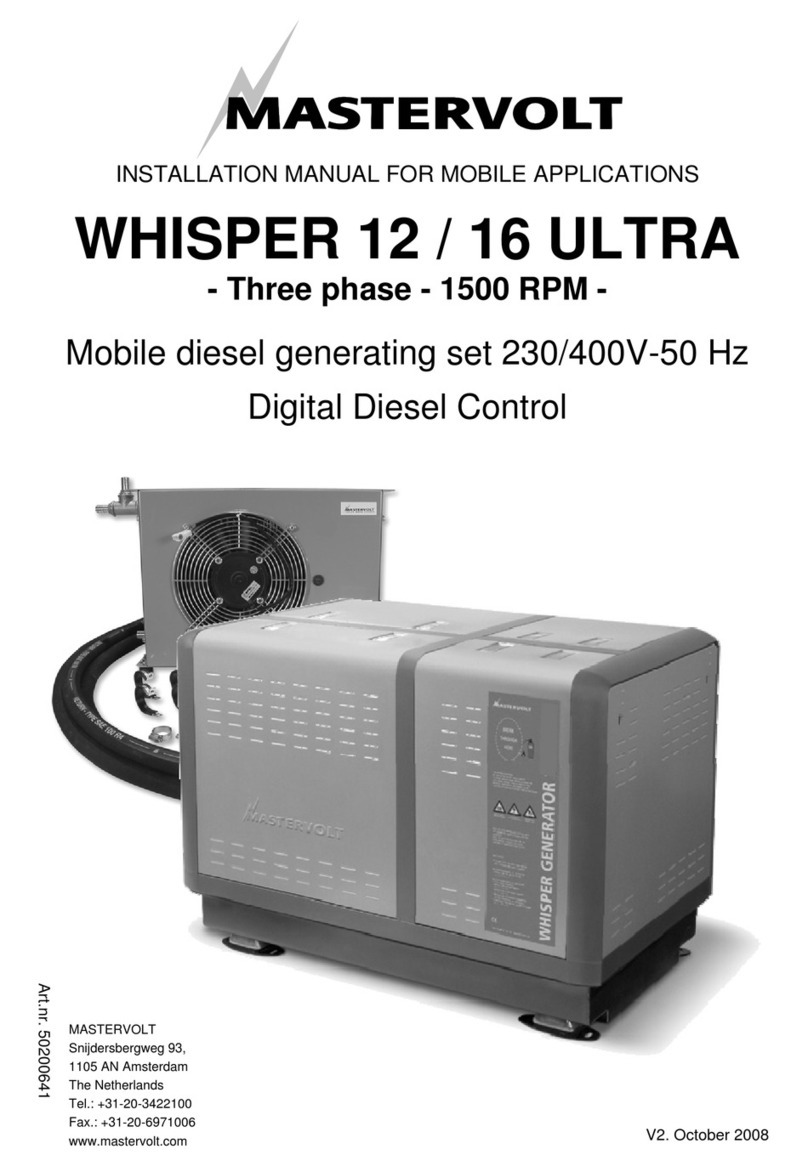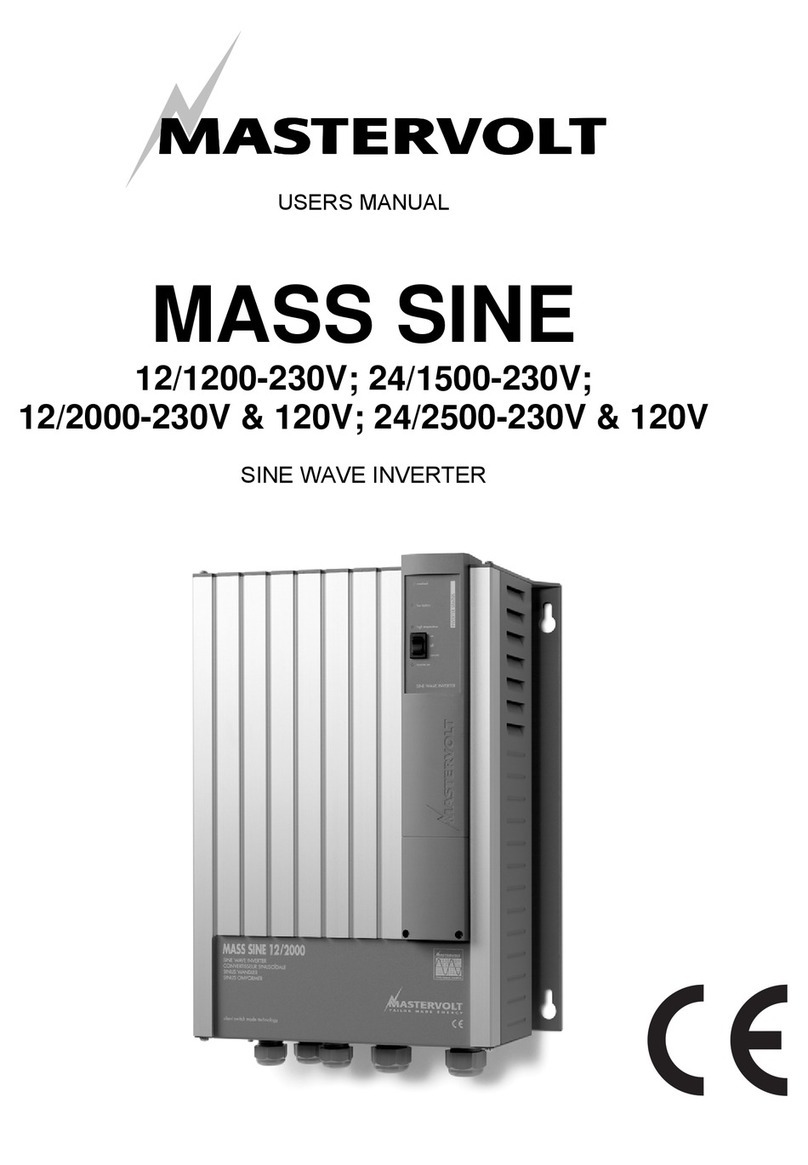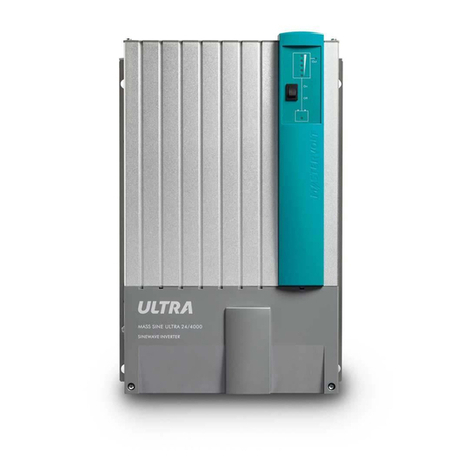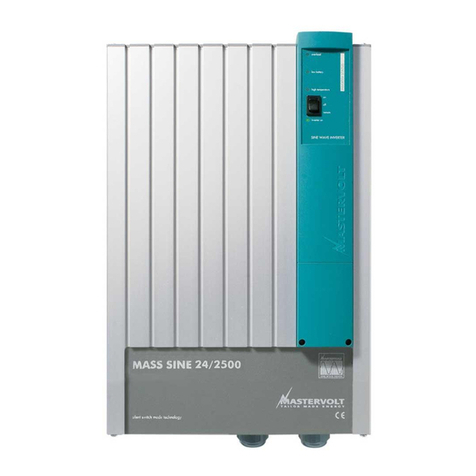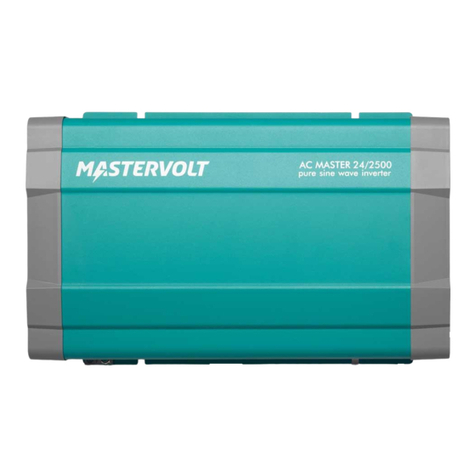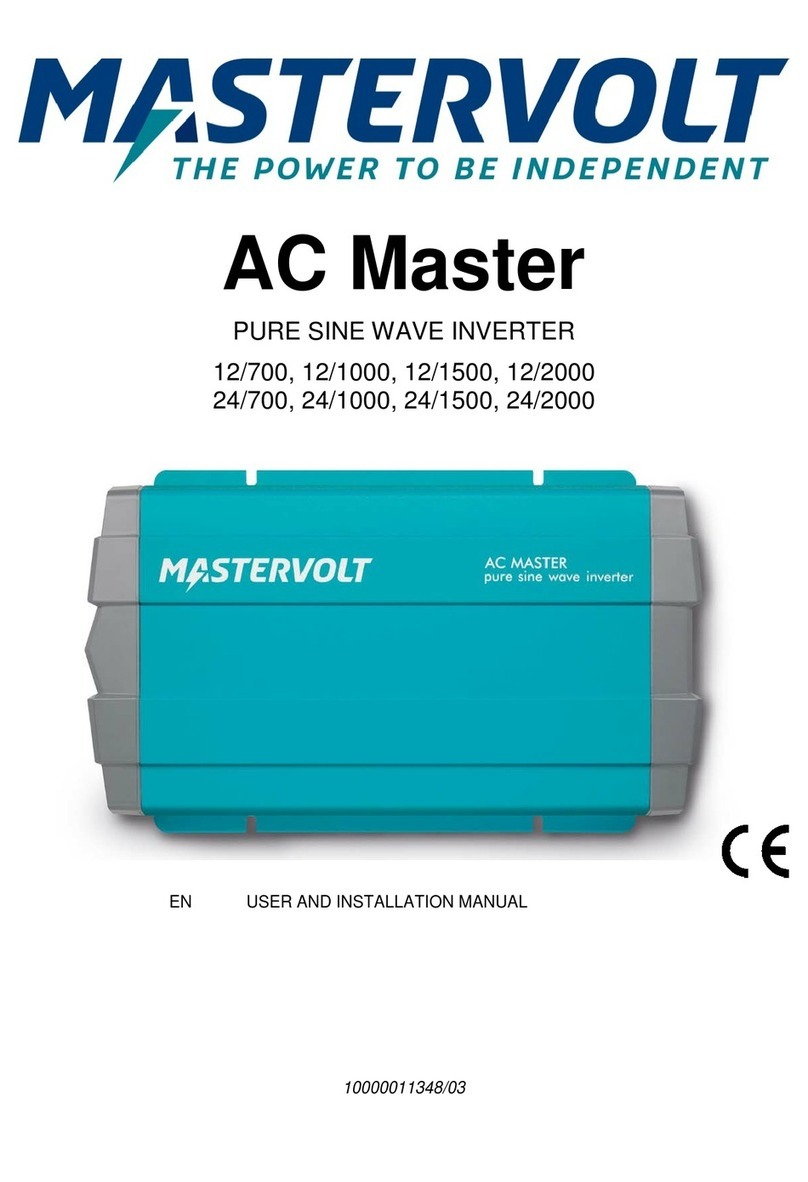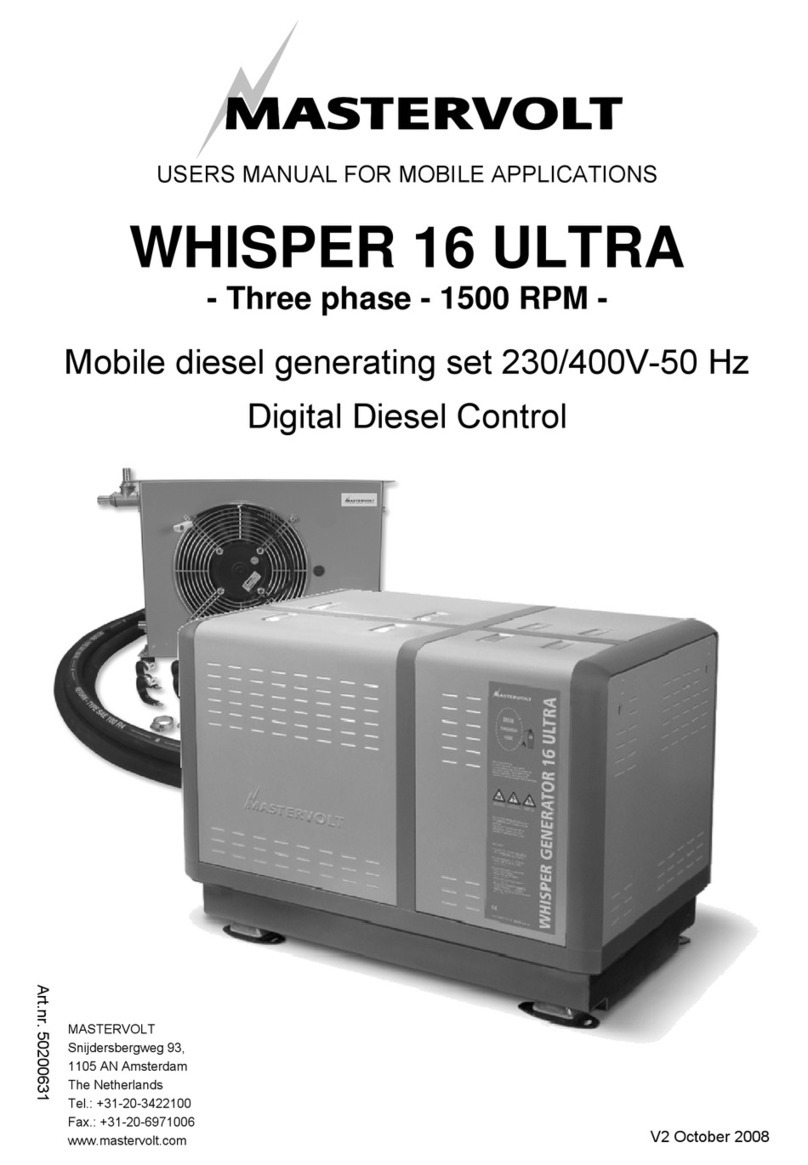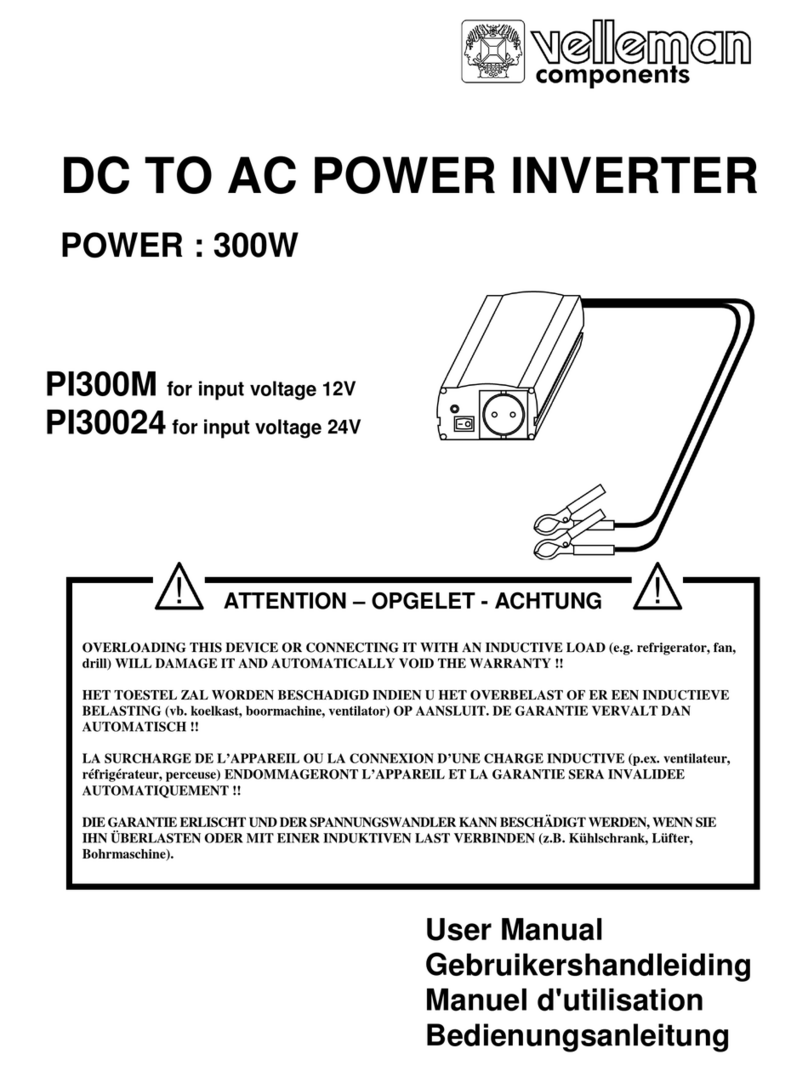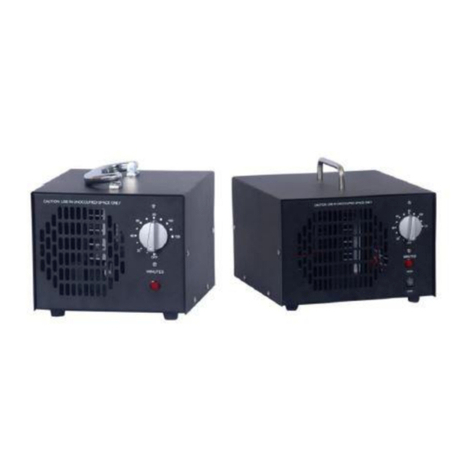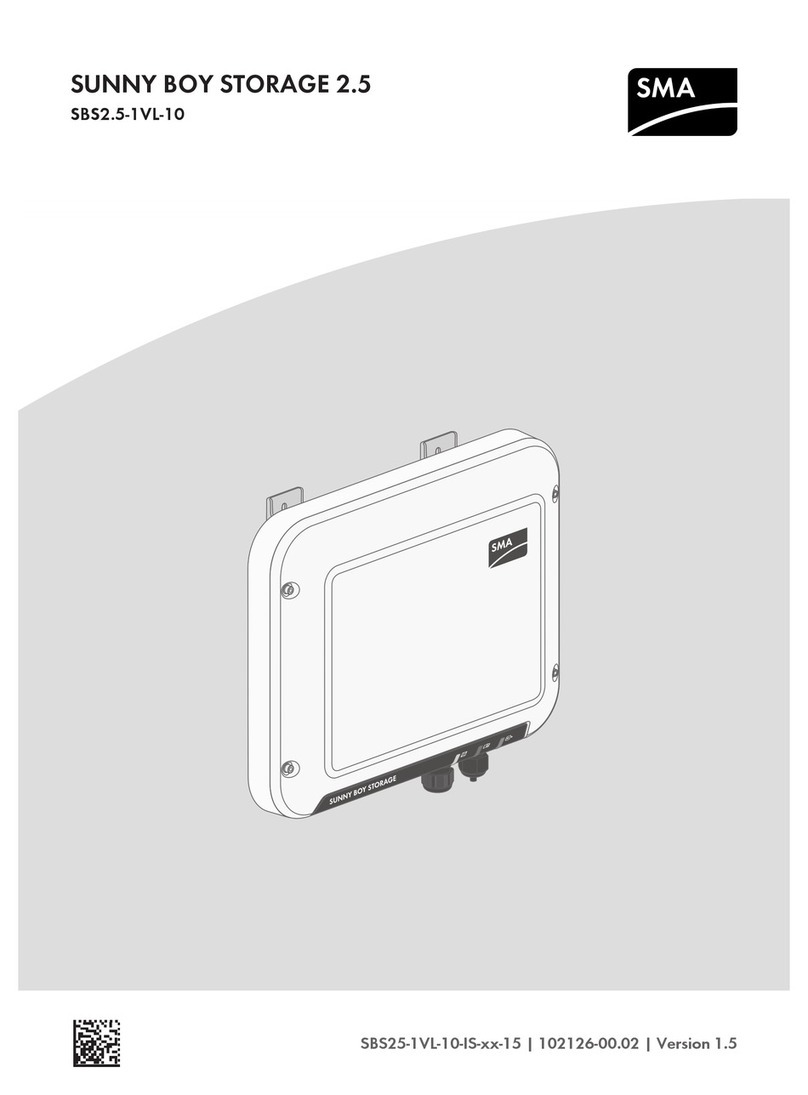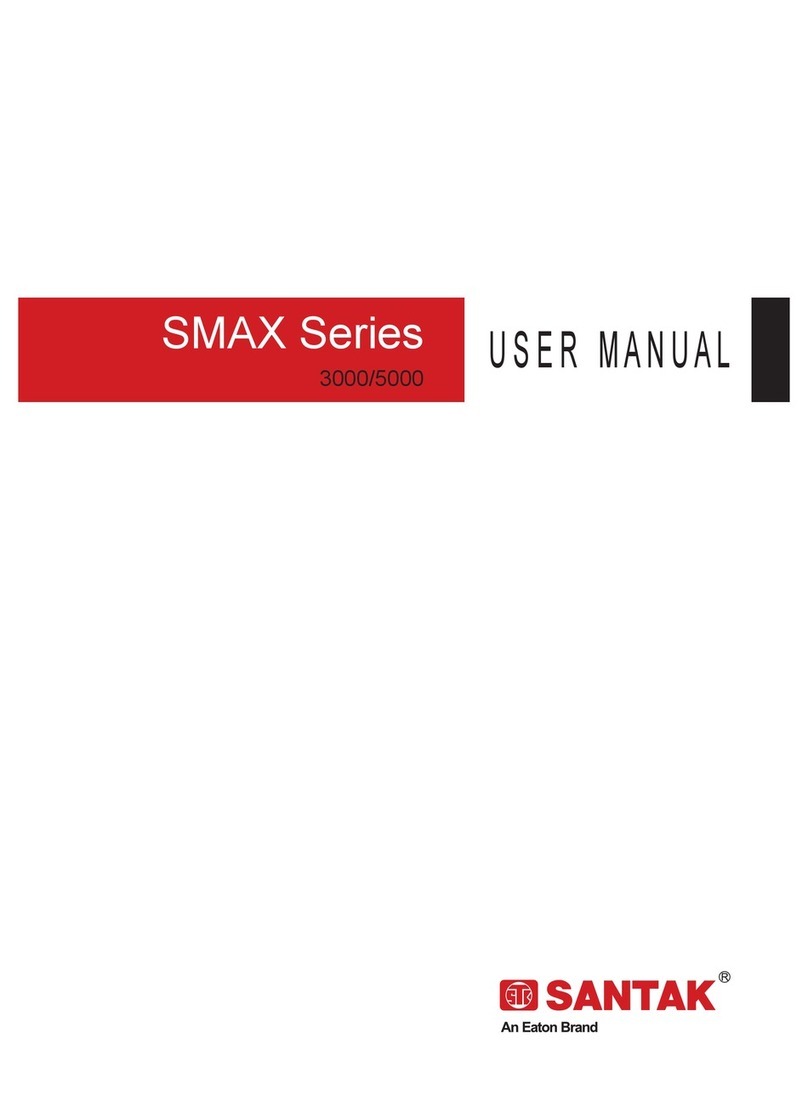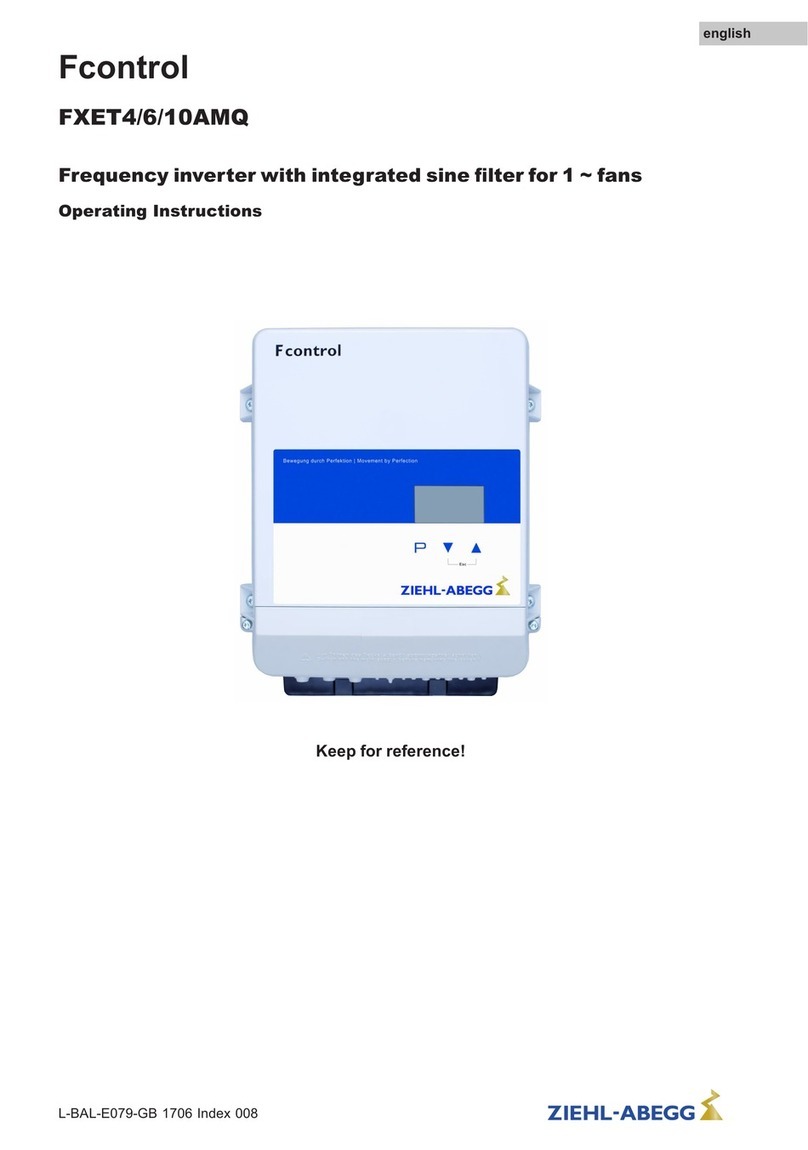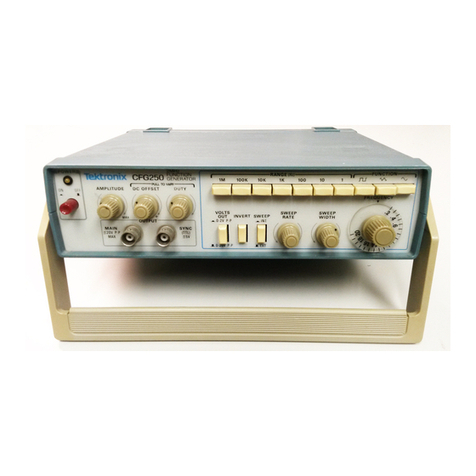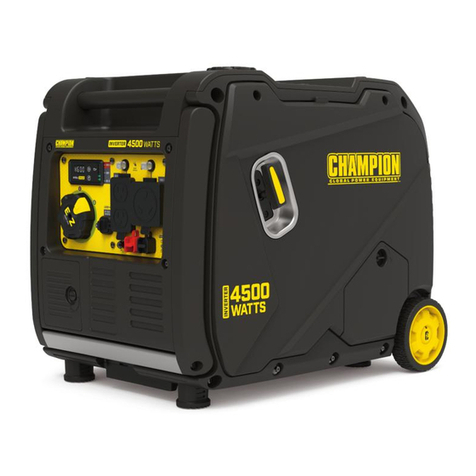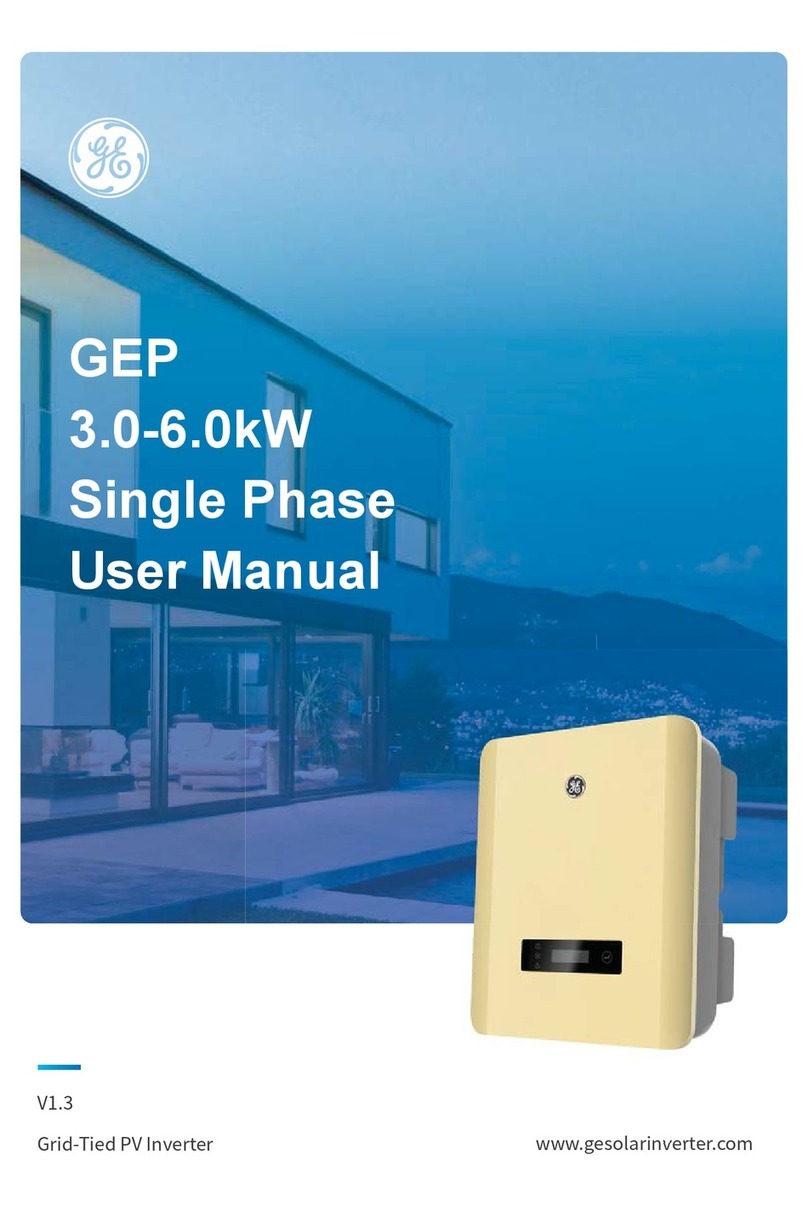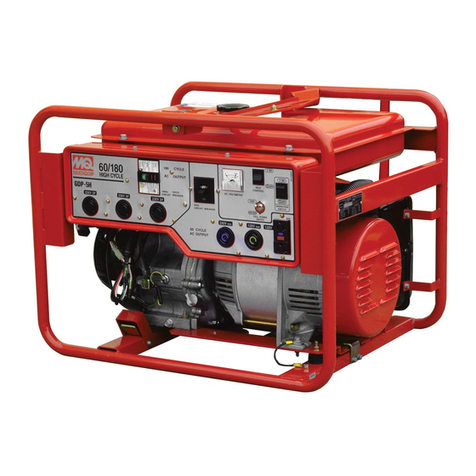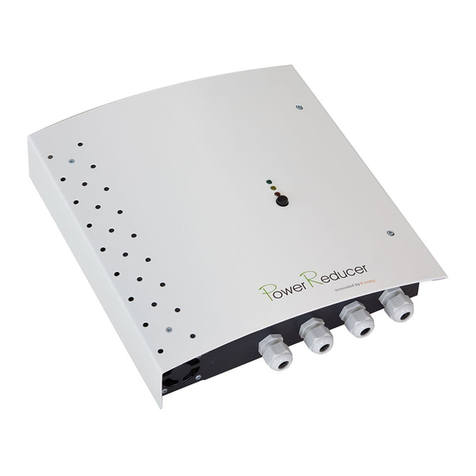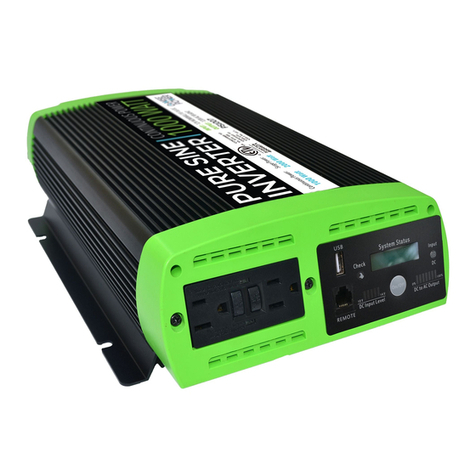USA / WHISPER 9,5 / 12,5 / 15 / 20 ULTRA / September 2004 3
1INSTALLATION
To ensure reliability and durability of the equipment, it is
very important that the installation is carried out with the
utmost care and attention. To avoid problems, such as
temperature problems, noise levels, vibration, etc. the
instructions set out in this manual must be followed and
all installation work must be carried out professionally.
1.1 LOCATION
Since Whisper generating sets have extremely compact
dimensions, they can be installed in tight locations. Plea-
se consider that even almost maintenance-free machi-
nery must still remain accessible.
When selecting the location area to mount the generating
set, make sure there is sufficient room to carry out any
maintenance work. The unit must be easily accessible on
the service side and on the distribution side to have ac-
cess to the V-belt.
Please also note that in spite of the automatic oil pressu-
re sensor it is still essential that the oil level is checked
regularly.
1.2 INSTRUCTIONS FOR OPTIMAL SOUND
AND VIBRATION INSULATION
Position the generating set as low as possible in the
vessel. As the generating set already has secured to the
base frame by means of flexible engine mountings, the
frame can be mounted directly to the vessel’s main struc-
ture.
1.2.1 Steel base plate
However to keep resonant vibrations at a minimum, it is
possible to mount the generating set on a solid steel base
plate, weighing 50% of the weight of the generating set.
The engine draws its inlet combustion air through several
holes in the capsule base. Therefore the capsule must be
fitted with sufficient clearance between the capsule
underside and the base plate.
1.2.2 Further recommendations
Whisper generating sets are standard equipped with a
"GRP" (Glass Reinforced Plastic) sound cover. The ca-
nopy has been designed to give an effective sound insu-
lation. For optimum sound and vibration dampening, the
following factors should be considered.
1Avoid mounting the generating set in close proximity
to thin walls or floors as that may resonate.
2Sound dampening is extremely poor if the generating
set is mounted on alight weight flimsy surface such
as plywood which will only amplify vibrations. If
mounting on a thinner surface cannot be avoided, this
should at least be reinforced with stiffening struts or
ribbing. If possible, holes should be drilled or cut
through the surface to help reduce the resonance.
Covering the surrounding walls and floors with a
heavy coating plus foam will certainly improve the
situation.
3Never connect the base of the generating set directly
to bulkheads or tanks.
1.3 VENTILATION
The generating set normally draws air from the engine
room. Engine rooms with natural ventilation must have
vent openings of adequate size and location to enable
the generating set to operate without overheating. To
allow an ample supply of air within the temperature limits
of the generating set an opening of at least 15 square
inches (100 cm2) is required.
A"sealed" engine compartment must have a good
extraction ventilator to maintain reasonable engine room
temperatures. High temperature of intake air reduces
engine performance and increases engine coolant tem-
peratures. Air temperatures above 104°F (40°C) reduce
the engine power by 2% for each 90°F (5°C) of rise. To
minimise these effects the engine room temperature
must not be more than 30°F (15°C) above the outside
ambient air temperature.
Apply a combination of ventilators, blowers and air intake
ducting to meet the temperature limit. The air inlet ducts
should run to the bottom of the engine room to clear
fumes from the bilge and to circulate fresh air. Air outlets
should be at the top of the engine room to remove the
hottest air. An engine room blower should be used as an
extraction ventilator to remove air from the engine room.
In cases where it is impossible to meet the above mentio-
ned temperature limit by using machine room ventilation,
connections are to be made for an air inlet directly to the
enclosure. With these connection the generating set can
be directly connected to an air duct.
INSTALLATION
